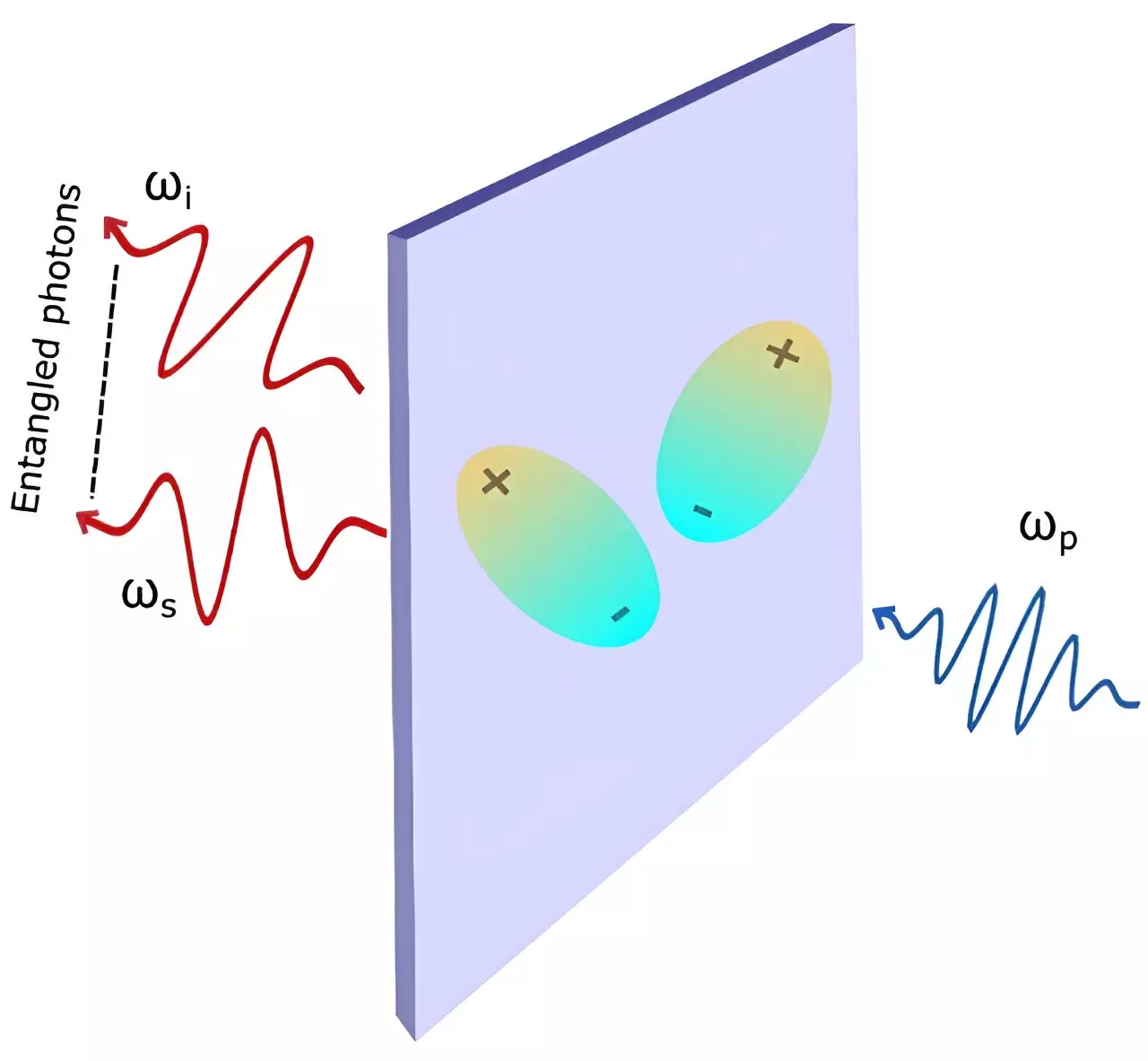Recent explorations into quantum technologies have emphasized the urgent need for more effective light sources capable of generating entangled photons. These entangled photons are fundamental to a broad spectrum of applications, including quantum computing, secure communications, and advanced imaging techniques. Scientists at the National University of Singapore (NUS) have made groundbreaking strides toward this goal by innovatively leveraging excitonic phenomena in non-linear optical materials. Their research illuminates a path toward the creation of ultrathin quantum light sources that promise enhanced efficiency in the production of entangled photon pairs.
To grasp the significance of this research, it is crucial to understand what excitons are and how they function. Excitons represent bound pairs of electrons and holes created when energy, typically from light, integrates with a material. This interaction gives rise to excitonic states that can influence various optical processes. The researchers, led by Associate Professor Su Ying Quek, have meticulously demonstrated that these excitonic interactions can significantly amplify the efficiency of spontaneous parametric down-conversion (SPDC)—a conventional method used to generate entangled photons.
The inherent inefficiency of SPDC has historically limited its application, as it often requires substantial input light and specific environmental conditions to produce viable quantum states. By appraising the intimate behavior of excitons within the crystal lattice, the NUS team succeeded in showcasing that optimizing the proximity of negative and positive charges can lead to greater entropy or disorder, which is beneficial for the enhancement of SPDC outcomes.
Breaking Through Technical Barriers
One of the most notable challenges in the realm of SPDC is the phase-matching problem, where the coherence between the pump beam and the generated photon pairs must be maintained to achieve maximum efficiency. Traditionally, the use of ultrathin crystals—previously considered suboptimal due to their lower volume—has been largely discouraged. However, the insights from this research suggest that these very ultrathin structures can be reimagined as advantageous, owing to their stronger excitonic interactions, which can overcome phase-matching limitations.
As highlighted by Prof. Quek, this paradigm shift opens doors to innovative optical technologies. The study delineates how ultrathin crystals can be utilized without sacrificing efficiency, a leap forward that could revolutionize the integration of such materials into quantum photonic systems.
At the core of this research lies a comprehensive theoretical framework that employs fully quantum mechanical calculations. By meticulously analyzing the non-linear optical responses of the chosen crystals to incident light, the team was able to account for the nuanced interactions of excitons. This analytical precision allowed them to draw parallels between their theoretical predictions and empirically observed phenomena, validating their approach.
Dr. Fengyuan Xuan, the lead author, articulated the essence of this theoretical endeavor by stressing the dramatic increase in transition probabilities caused by the close proximity of opposite charges. This assertion illustrates the critical interplay between quantum mechanics and material science, propelling innovation in the field of quantum optics.
Implications for Future Technologies
The implications of these findings are vast, as the ability to generate entangled photons efficiently using ultrathin materials paves the way for their integration into hybrid quantum-photonic platforms. The promise of seamless integration of such efficient light sources could transform quantum communication systems, paving the way for technologies previously confined to theoretical realms.
Moreover, this research on NbOI2, a layered non-linear optical material, provides empirical support that extends beyond the realm of theoretical calculations. Their findings align with previously published experimental results on second harmonic generation (SHG), bolstering confidence in their predictions.
The advancements made by the NUS team signify a critical juncture in the pursuit of efficient quantum light sources. By cleverly utilizing excitonic interactions within ultrathin non-linear optical materials, they have addressed longstanding inefficiencies associated with conventional methods of generating entangled photons. As quantum technologies continue to evolve, this research not only enhances our understanding of light-matter interactions but also sets the stage for the next generation of quantum devices, ultimately leading toward a future where quantum communication and computation are seamlessly enhanced by efficient light sources.


Leave a Reply